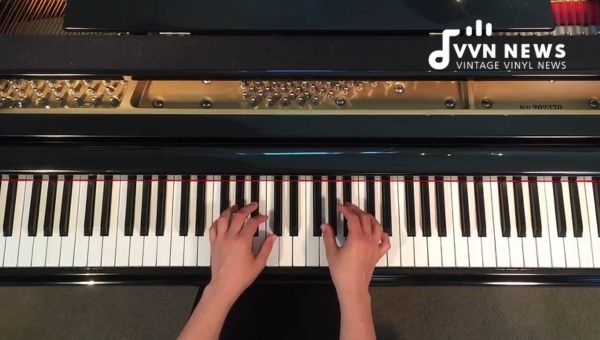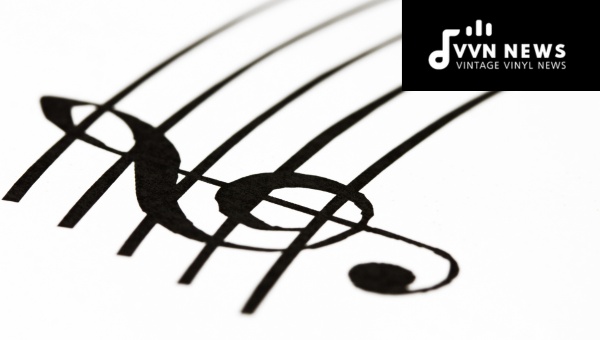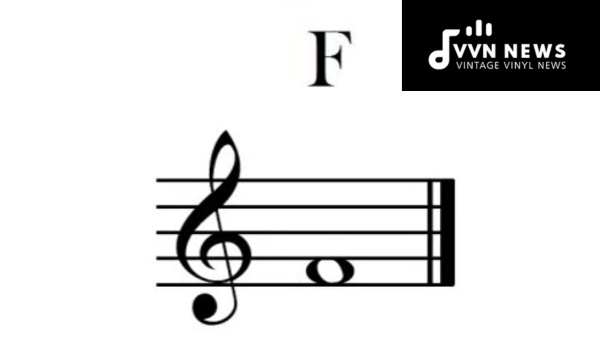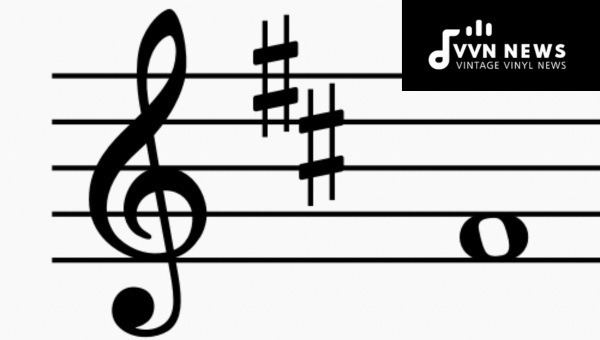The F sharp music note may seem like just another pitch in the grand scheme of a musical composition, but to those attuned to its nuances, it carries a world of significance.
Often denoted by the symbol F♯ or G♭ when written on sheet music, this semitone sits snugly between F and G in the chromatic scale.
It’s a key player in various chords and melodies, opening doors to rich harmonies and compelling modulations that can elevate a simple tune into something truly captivating.
As we delve into its characteristics and its place within the vast universe of music, you might discover an even greater admiration for the craft that composers and performers alike dedicate their lives to masterfully weaving together.
Where is the F Sharp note located on a musical staff?
To locate F♯ on the musical staff, first, find the treble clef (the G clef). Look at the second line from the top, which typically represents G.
To notate F♯, you would place a sharp symbol (♯) on the space just below this line, making that note F raised to F sharp.
On the bass clef (F clef), it’s slightly different: locate the second line from the top to find A; F♯ would be notated on the fourth line from the top.
Remember that in key signatures with sharps, F♯ is always the first sharp listed, showcasing its fundamental role in altered scales and keys.
How to locate an F Sharp note on piano and keyboard layouts

Locating the F♯ note on your piano or keyboard is simple once you identify the patterns among the keys.
Start by looking at the group of three black keys. F♯ is found directly to the right of the first black key in this trio.
In relation to the white keys, it sits between F and G, hence its alternate name, G♭.
Here’s an easy step-by-step process:
- Find Middle C: This is typically near the center of your keyboard and is a great reference point.
- Identify the Black Keys: They are grouped in twos and threes.
- Locate the Group of Three: The leftmost black key is F♯/G♭.
- Press Down: You’ve found your F Sharp!
Every set of three black keys will have an F sharp as its first member – it’s a pattern duplicated across the entire span of your instrument’s keyboard layout.
Also Read: A Flat Minor Triad [Guide to Unusual Guitar Chords]
Possible Accidentals for an F Sharp Note
When delving into the realm of music theory, it’s crucial to understand how accidentals can affect a note like F sharp.
An accidental is a symbol that raises or lowers the pitch of a note, thus impacting its place within the scale.
For F sharp, there are several possibilities concerning accidentals that you should be familiar with.
Double Flats and Sharps
Interestingly, there is such a thing as a double sharp (????) and a double flat (????). You might wonder what happens to F sharp when these are applied.
- F Sharp Double Flat (F♯????): This essentially lowers the pitch by two half steps, making it equivalent to E natural (E).
- F Sharp Double Sharp (F♯????): This raises the note by two half steps, which means it sounds the same as G natural (G).
The Enharmonic Equivalent
Furthermore, accidentals open up the world of enharmonic equivalents—notes that sound alike but are notated differently. For instance:
- F Sharp (F♯): Is enharmonically equivalent to G Flat (G♭).
The accidental application will depend on various factors such as key signature or harmonic context.
Composers choose whichever notation best aligns with their compositional intentions and aids musicians in understanding the music properly.
Natural Accidental
Finally, we have a natural accidental:
- F Sharp Naturalized (F♯♮): When you see this symbol beside F sharp, it’s being returned to its original state after being altered by another accidental in previous measures—back to just F sharp itself.
Accidentals provide versatility in composition and performance by modifying the pitch of base notes like F sharp.
Musicians must pay close attention to these symbols as they can dramatically change how a piece is played and understood.
Also Read: Chords In B Major [Step By Step Guide For Guitarists]
How is an F Sharp note represented across various musical clefs?

The F sharp note is a versatile pitch that appears in various contexts within musical notation.
Depending on the clef, its position shifts, offering musicians unique roadmap instructions on where to find and play this particular pitch.
Let’s explore how the F Sharp note appears across seven different clefs.
Treble Clef
In the treble clef, which is often the go-to for higher-pitched instruments like the violin or flute, the F sharp sits on the top line of the staff when notated in its most common octave.
If you are envisioning a piano, it would correspond with the black key right of middle C’s neighboring F key.
This notation sets a familiar ground for many who start learning music.
Bass Clef
For lower-pitched instruments like the bass guitar or trombone, we turn our attention to the bass clef.
Here, F sharp is placed on the fourth line from the top of the staff. Think of it as middle C’s lower neighbor by two whole steps. Playing this can add depth and resonance to harmonious landscapes.
Alto Clef
A mainstay for violists, the alto clef uniquely positions F sharp on the second space from below when referencing one octave above middle C’s F sharp.
While less common generally, alto clef mastery is crucial for specific orchestral settings and musical niches.
Tenor Clef
Transition into the tenor clef, and you’ll see that F sharp lands snugly on the second lowest line of our musical grid – a place where cello aficionados might nod in familiarity.
Mezzo-Soprano Clef
Although rarer than others, mezzo-soprano clef shows an F sharp one octave above middle C as hitting just below—on what we call—the first line; it’s primarily historical but still worth knowing.
Soprano Clef
Soprano clefs have become less common in modern music but they represent an important part of historical compositions.
You would find an F sharp on a soprano staff located right onto the third space from below giving an airy feel fitting to its vocal register origins.
Baritone Clef
Finally diving into the baritone territory, this chart indicates our specific note chilling comfortably at home—the very bottom line—when considering one octave below the middle C’s range.
Recognizing how one single pitch like F sharp morphs visually across these diverse musical terrains showcases not only music’s complexity but also its boundless adaptability.
Also Read: G Diminished Triad [Guide To Unique Guitar Chords]
Popular Scales Starting with F Sharp
When you begin to explore scales that start on the F sharp note, you’re venturing into a realm where this note sets the foundational tone, serving as the tonic—the first and primary pitch around which the rest of the scale is built.
Major Scale: F♯ Major
An important scale starting with F sharp is the F♯ Major Scale. This scale follows a specific pattern of whole and half steps: W-W-H-W-W-W-H (W = Whole step, H = Half step).
In this context, ‘whole’ refers to two semitone steps, and ‘half’ refers to one semitone step. The notes in this scale are:
- F♯, G♯, A♯, B, C♯, D♯, E♯(F), and back to F♯.
The raised E to an E sharp is crucial here—it technically sounds like an F natural but is notated as E sharp to preserve the correct alphabetical order and structure of the scale.
Minor Scale: F♯ Minor
Alongside major scales are their melancholic counterparts, minor scales. The F♯ Minor Scale imparts a more somber or introspective mood. Its natural form follows this pattern: W-H-W-W-H-W-W. The notes are:
- F♯, G♯, A, B, C♯, D, E, then returning to F♯.
For variation and musical expression within the minor key signature context, musicians can also use harmonic or melodic minors which slightly adjust these patterns for distinct auditory effects.
Beyond these diatonic relatives lie chromatic scales where each subsequent pitch is a semitone apart—including our pivotal F sharp among other intricate progressions.
Also Read: Chords In E Major [Master The Guitar With This Guide]
What are the Modes that Begin with an F Sharp Note?

Modes in music are scales derived from the major scale’s degree. Each mode has a unique feeling and emotional color, starting on a different note of the major scale.
Here’s an exploration of modes that commence with an F sharp note:
Ionian Mode (F♯ Major)
The Ionian mode is essentially the major scale itself. Thus, an F♯ Ionian starts on F sharp and follows the sequence of whole and half steps characteristic of a major scale: W-W-H-W-W-W-H (where W is the whole step, H is the half step).
In terms of intervals, it goes like this: F♯-G♯-A♯-B-C♯-D♯-E♯(F)-F♯. It carries a bright and happy sound.
Dorian Mode (F♯ Dorian)
Now consider F♯ Dorian, which can be thought of as originating from an E major scale but starting on its second degree (the F sharp).
This mode has a pattern of W-H-W-W-W-H-W. Its minor third gives it a slightly sadder tone than Ionian, yet not as melancholic as Aeolian.
Phrygian Mode (F♯ Phrygian)
With its exotic flavor, F♯ Phrygian begins with a half step. Derived from D major starting at its third degree, this mode goes by H-W-W-W-H-W-W.
The interval sequence is quite distinct: F♯-G-A-B-C♯-D-E-F♯.
Lydian Mode (F Sharp Lydian)
Romancing with brightness heightened by its raised fourth degree, the Lydian mode in F sharp emerges from C sharp (Db) major, beginning on its fourth note.
It follows W-W-W-H-W-W-H, offering an ethereal quality often used for dreamy and euphoric sections in music.
Mixolydian Mode (F Sharp Mixolydian)
A favorite for bluesy feels—the Mixolydian mode—begins on the fifth note of a major scale; in this case, G# major’s fifth is our F Sharp Mixolydian mode: W-W-H-W-W-H-W.
Aeolian Mode (F Sharp Aeolian or Natural Minor Scale)
For something more somber or thoughtful, turn to F Sharp Aeolian, also known as the natural minor scale.
This one aligns with A Major’s scale starting from its sixth degree: W-H-W-W-H-(W+W)-H – and carries that distinctively plaintive sound we associate with minor keys.
Locrian Mode (F Sharp Locrian)
If you’re looking for tension or dissonance, cue in the Locrian mode which begins as B Major’s seventh degree. With H-(W+W)-H followed by four more steps—W,H,W,W—it’s indeed rare and complex.
Incorporating these modes into your compositions or improvisations can deeply enrich harmonies and paint different musical moods using only variations based on our focal note: F sharp.
What is the Typical Frequency of an F♯ Music Note?
When we discuss the frequency of an F sharp (F♯) music note, we’re often referring to its standard tuning pitch in the context of equal temperament, where an octave is divided into twelve semitones of equal size.
Affecting emotional response and sonic texture, the F♯ note resonates in our ears as it vibrates through the air.
The concert pitch for F♯ below middle C (known as F♯4) commonly vibrates at about 370.0 Hz.
Also Read: E Music Note Guide [Unlock Your Guitar’s Potential]
FAQ about F Sharp Music Note
What is the frequency range of an F Sharp note?
The standard frequency for the F Sharp note above middle C (F♯4/G♭4) is approximately 369.99 Hz.
How does F Sharp relate to G Flat in music theory?
F Sharp (F♯) and G Flat (G♭) are enharmonic equivalents, meaning they are two different names for the same pitch in equal temperament tuning systems.
Can I find F Sharp on both major and minor scales?
Yes, F♯ is a common tone that can appear in both major and minor scales, depending on the key.
In string instruments, how do you typically play an F Sharp note?
On instruments like the violin or guitar, an F Sharp is generally played by placing a finger on the correct fret or string position to raise the pitch of an F natural by a half step.
Is F Sharp considered a difficult key for pianists to play in?
While not inherently difficult, keys with an F sharp often contain more black keys, which can require extra practice for pianists to navigate comfortably.
Conclusion
The F♯ note serves as a pivotal force in the tapestry of music, shaping melodies and enriching harmonies with its distinctive pitch.
Whether it’s grounding scales or accentuating chords, F Sharp holds its own as a note that can transform the mood and color of a composition.
As you continue to explore and experiment with this seminal semitone, always remember its power to add depth and intrigue to your musical endeavors.
Embrace the complexities of F♯, and watch as your sonic landscapes flourish.








